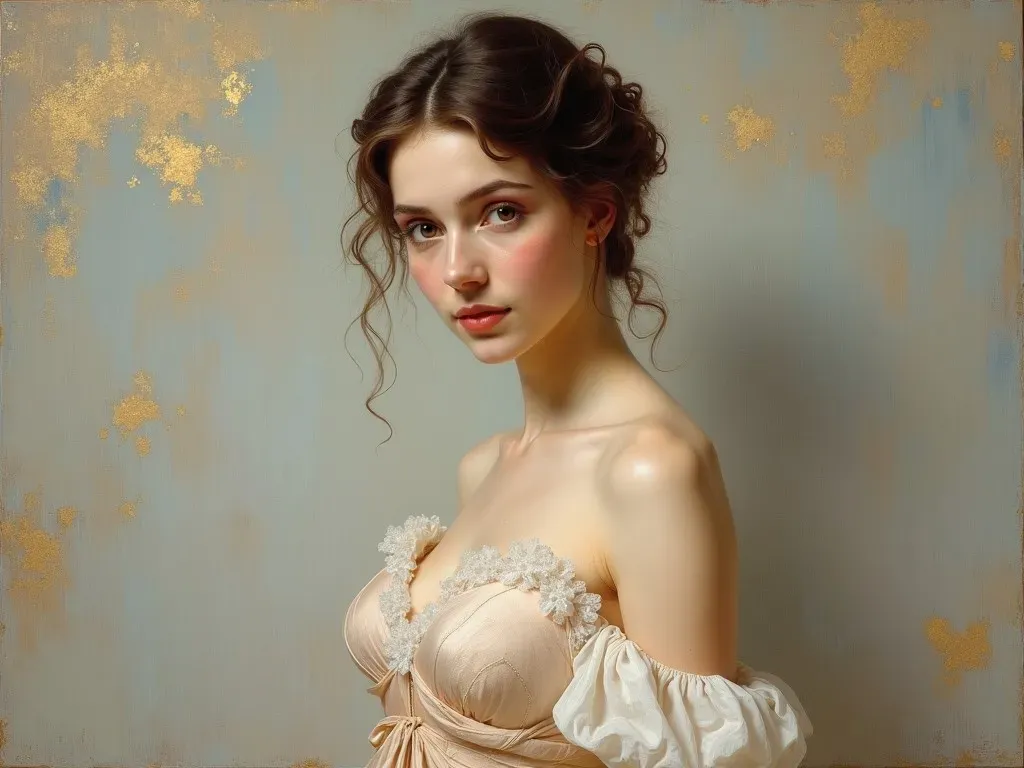John Singer Sargent (January 12, 1856 – April 14, 1925) was an American artist revered as the leading portrait painter of his era for his stunning oil paintings reflecting Edwardian-era luxury. An extraordinarily prolific artist, Sargent created roughly 900 oil paintings and more than 2,000 watercolors over his lifetime, capturing the intricacies of human emotion and social status with stunning detail and flair.
The Mastery Behind Sargent’s Oil Paintings
Sargent’s skill with oil paint is legendary, demonstrating a remarkable ability to capture the likeness, mood, and character of his subjects. Each brushstroke seems to tell the story of the individual, engaging viewers while evoking the elegance and sophistication of the period.
Techniques and Styles
Sargent’s oil paintings are notable for several distinct Techniques and stylistic elements that set them apart in the art world:
- Realism: Sargent’s realistic portrayals are enhanced by his keen understanding of anatomy and an eye for detail.
- Fluid Brushwork: His bold and fluid brushwork allowed for a vibrant texture that adds depth to portraits.
- Dramatic Lighting: Sargent often employed chiaroscuro, the contrast of light and shadow, to imbue his works with drama.
- Innovative Composition: His arrangements often drew from both traditional and modern approaches, resulting in unique, eye-catching compositions.
| Technique | Description |
|---|---|
| Realism | Lifelike portrayals characterized by intricacy. |
| Fluid Brushwork | Energetic, visible brushstrokes create texture. |
| Dramatic Lighting | Use of light and shadow for emotional impact. |
| Innovative Composition | Unique arrangements that captivate the eye. |
Sargent’s Most Famous Oil Paintings
Among the numerous masterpieces he produced, several works stand out as pillar representations of his style and mastery:
1. Portrait of Madam X (1884)
This iconic painting of Virginie Amélie Avegno Gautreau is famed for its sensual portrayal and scandalous undertones. The stark contrast of the black dress against the skin tone and the provocative pose sparked controversy upon its unveiling.
2. Carnation, Lily, Lily, Rose (1885-1886)
This double portrait features two young girls amidst a background of blooming flowers. Sargent’s use of color and light creates a serene yet enchanting atmosphere, capturing a fleeting moment of childhood.
3. The Daughters of Edward Darley Boit (1882)
In this oil painting, Sargent portrays the four daughters of Edward Boit playing in a spacious interior, evoking a sense of mystery and depth. The unconventional composition and use of space invites the viewer into the intimate world of the subjects.
4. El Jaleo (1882)
Sargent’s depiction of a flamenco dancer in an intimate setting showcases the vibrancy of Spanish culture. The dramatic lighting and movement reflect his fascination with the human form.
5. The Boit Daughters (1882)
This mesmerizing piece portrays the daughters of Edward Darley Boit, capturing both their individuality and the familial bond in an unusually composed and elegantly rendered scene.
Reference Video
Impact and Legacy of John Singer Sargent
Prolific Output
The extent of Sargent’s work contributes greatly to his legacy. With almost 900 oil paintings to his name, he stood out not just for quantity but for consistently high quality.
| Year | Total Oil Paintings Produced |
|---|---|
| 1880-1890 | 310 |
| 1891-1900 | 280 |
| 1901-1910 | 210 |
| 1911-1920 | 100 |
Influence on Future Artists
Sargent’s influence extends beyond his own generation. Many artists have drawn Inspiration from his technique, composition, and subject matter. Contemporary portraitists continue to study his works to understand human emotion and portrayal through paint.
Frequently Asked Questions (FAQ)
What materials did John Singer Sargent use for his oil paintings?
Sargent primarily used oil paint on canvas for his artwork, allowing him a rich palette and versatility in texture and shading.
What theme is most prominent in Sargent’s oil paintings?
Sargent’s paintings often explore themes of high society, elegance, and portraiture, reflecting the lives and personalities of his affluent subjects.
How can I view John Singer Sargent’s works today?
Many of Sargent’s paintings are housed in prestigious institutions around the world, including the Metropolitan Museum of Art, the Tate, and the National Gallery. You can explore his complete works online through platforms like WikiArt and Wikipedia.
What is the significance of Sargent’s work in American art history?
Sargent is often celebrated as one of America’s most important artists, exemplifying the transition from traditional portraiture to a more modern interpretation, capturing the essence of the elite of his time.
Are there prints available of Sargent’s paintings?
Yes, prints and reproductions of Sargent’s works are available for collectors and enthusiasts through various art galleries and online retailers.
John Singer Sargent’s oil paintings remain timeless treasures, captivating audiences with their beauty, technique, and emotional depth. His legacy continues to inspire both artists and admirers alike, making him an enduring figure in the world of art.
This extended article reflects on the life and works of John Singer Sargent through his exceptional oil paintings, exploring the multifaceted themes present in his art while providing valuable insights into his legacy. Each section offers a deeper understanding of Sargent’s contributions to the art world.
